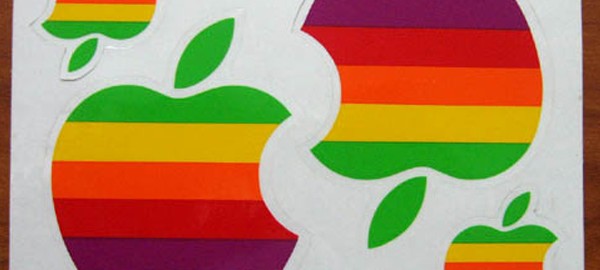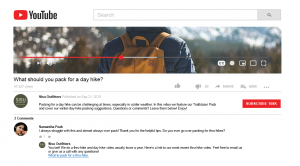Marketing your business effectively has never been an easy task, but in 2016, things are seemingly more difficult than ever before.
Not only are there increasing amounts of competition in almost every industry, but also there are also more ways than ever before to market your business. There’s SEO, social media, online paid advertising (e.g. PPC), direct marketing, word-of-mouth, traditional print advertising; the list goes on.
With each of these industries constantly trying to convince you that their marketing “solution” is the answer you’ve been looking for, things can often seem somewhat complicated (even to experienced business owners).
What’s more, it’s easy to get “sucked in” by the latest marketing trend(s) and unfortunately; this can often result in money down the drain.
In this post, my aim isn’t to introduce you to the latest, greatest marketing trend of 2016; the aim is simply to give advice as to how you can effectively market your small business (on a relatively small budget) in 2016.
Many of the techniques I mention in this post might not seem particularly glamorous or “trendy”, but I can assure you, they work well.
First Things First: You Need A Website (and a good one, too)
Many of you might find it hard to believe, but many small businesses still don’t have a website (or any web presence at all, for that matter).
If you’re running one of these businesses, I’m afraid I’m going to have to break this to you: you need a website.
It doesn’t matter if you’re selling direct to consumers and B2B, your website should act as a “hub” for which all other marketing tactics derive from.
It’s highly likely that should your potential customers/clients receive a business card/flyer/leaflet/cold call from you, they’re going to seek more information about your company online before they decide whether or not to give you their custom.
If you do already have a website, there’s another big thing you need to consider: your website needs to actually be good.

Many small businesses are still using websites that were built in the early 2000’s, and quite honestly, they often look terrible (see above).
The cost of creating a website has fallen dramatically over the years, so there really is no excuse for any small business not to have a decent website in 2016.

You can use sites like SquareSpace (pictured above), Wix, or even an open-source solution like WordPress to create a great website without falling into bankruptcy.
Note: If your technical knowledge is limited and website design/customisation is something you struggle with, you can hire a freelancer on sites such as PeoplePerHour.com, Elance or Odesk relatively cheaply.
Invest in “Traditional” Online Marketing Tactics (e.g. SEO, PPC, etc.)
Many small businesses make the mistake of creating a great website, but then completely neglect the marketing side of things.
It’s important to remember that without targeted traffic, your website is essentially worthless. You need traffic in order to attract custom and gain sales for your business.
Now, there are a lot of online marketing tactics out there, and it can often seem that there’s something new to “get involved in” every few months (e.g. Snapchat, Pinterest, Instagram, etc.)

What’s more, when something new does come along, you’ll often notice that articles/guides get published (like the one above) with the aim of attracting your attention to these new-fangled marketing ideas.
While these articles do often offer some good advice, the problem is that they tend to detract your attention from the things that really matter, in pursuit of a sort of “marketing golden ticket”.
This is known in the business world as “shiny object syndrome” (see a full explanation here).
It’s for this reason that you should stick to tried and tested online marketing tactics such as SEO, PPC and traditional social media (e.g. Facebook, Twitter), rather than pursuing some new-fangled idea that may/may not be obsolete within a few months.
You’re probably familiar with terms like SEO and PPC as they’re nothing particularly new (in fact, they’ve been around over a decade now), but they do work (assuming you don’t expect overnight results). This is where you should invest any time/effort/money when it comes to online marketing.
Note: It’s important that you take the time to learn the basics of these terms. You may wish to utilise an agency (or a freelancer) to do this work for you, but a basic education is required to ensure you’re hiring the best company for the job.
There are some great resources online in regards to SEO/PPC (such as this, and this), so have a read.
If utilised correctly, online marketing has the power to skyrocket sales for almost any small business.
Don’t Sleep When it comes to Traditional Printed Marketing (e.g. business cards, labels, etc.)
While having a website and promoting said website effectively is extremely important for any modern-day business, it’s also important not to neglect the more “traditional” marketing tactics.
The fact is that no matter what industry you’re in; chances are that your competitors are sleeping when it comes to printed marketing. Many will be investing their time/effort/money solely in online marketing tactics (including the aforementioned “shiny objects”), which means you can easily shine in the print department.
For example, if you find that most of your competitors have relatively bog-standard business cards, this is an area you can shine.
 .
.
Consider hiring a designer to create a stunning business card – perhaps with an “out of the box” design (such as the example above) – and you’ve already have the edge over your competitors.
It’s also likely that your competitors are sleeping when it comes to labels and stickers (as this is a massively underutilised marketing tactic).

By utilising stunning labels for your products (if you’re in retail, that is), you can easily stand out from the crowd and attract attention for your brand. Take a look at the product labels above for example. These labels give a relatively simple product the “wow” factor.

Even if you’re not in retail, you can also use labels to market your business by raising brand awareness. Apple did in the early 2000’s when they gave free stickers/labels away (see image above) with every product purchase.
With stickers and labels being so cost effective (you can get thousands for just a few pounds from companies like FastLabels.co.uk), they’re great for giving away at events, inside products, or even to existing fans of your brand, in order to raise brand awareness.
Business & Finance Articles on Business 2 Community(70)




